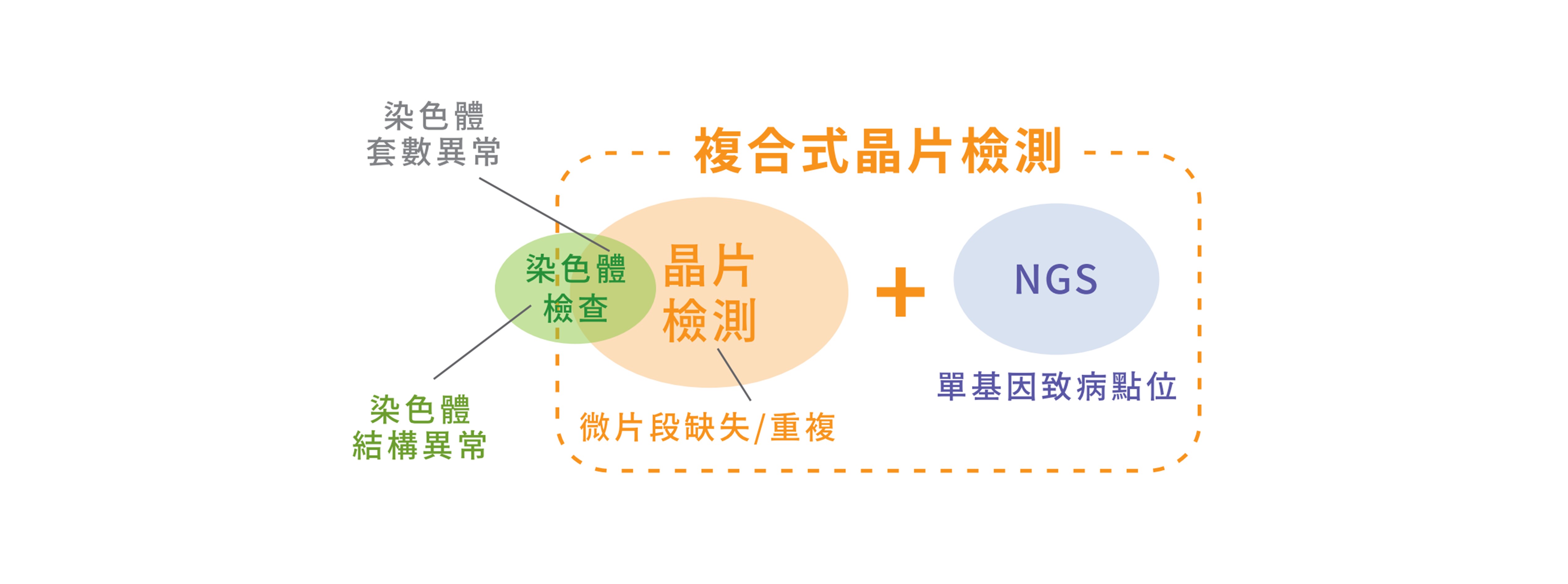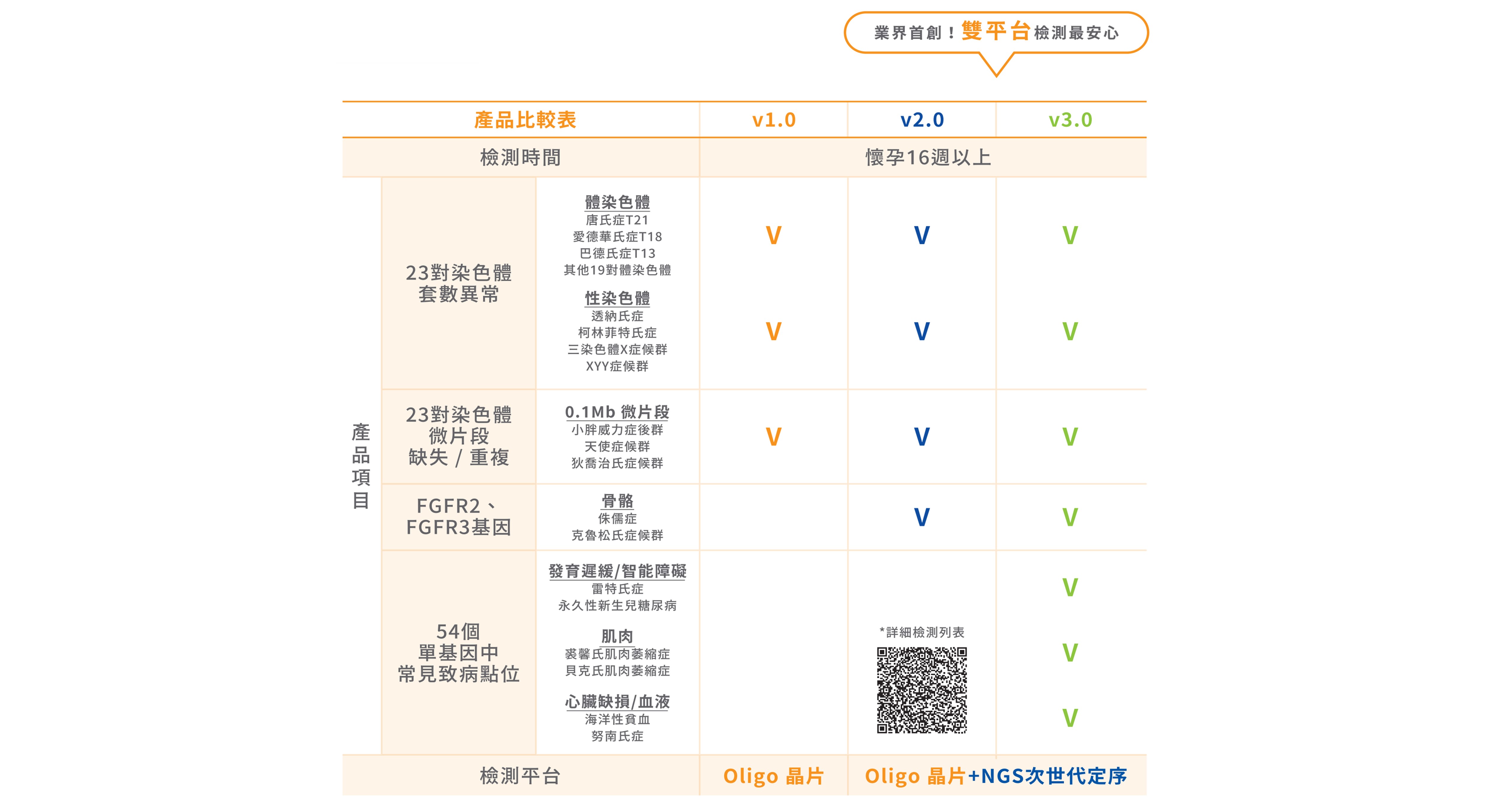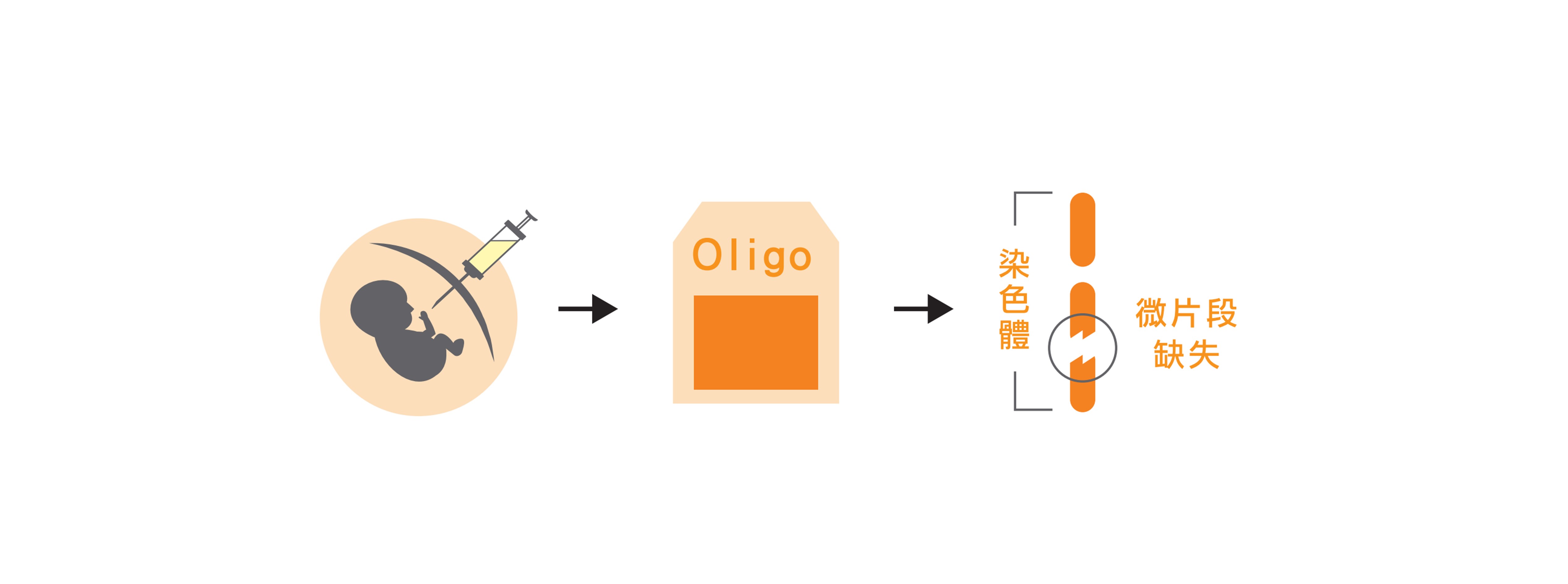👑慧智全方位複合式晶片檢測v1.0/ v2.0/ v3.0 (Array)
服務介紹
■ 別再忽視微片段/單基因異常問題
傳統的染色體檢查是產檢中重要一環,能找出染色體套數、結構問題,但無法檢測到微小的基因異常。
染色體微片段缺失/重複和單基因致病點位異常容易造成發育遲緩、器官發育不全、部分自閉症及智能障礙等嚴重疾病,但這些卻是超音波檢查較不容易發現的。

高解析度Oligo晶片利用探針專一的特性,檢測染色體微片段缺失/重複問題,並彌補傳統染色體檢查的不足,兩者相輔相成無法互相取代。
根據臨床數據統計,染色體檢查及晶片檢測正常個案中,尙有20-30%單基因異常的機率,因此國際學會建議, 產前也應該透過次世代定序(NGS)技術,將寶寶的單基因致病點位進行更詳細的檢測。

■ 高解析複合式晶片 完整掌握寶貝健康

檢測說明
✔ 第一線羊水產前檢測 針對微片段異常
國際學會推薦,產前應透過臨床上高使用率的Oligo晶片檢測技術,確認染色體微片段缺失或重複問題。
✔ 異常寶寶不是高齡產婦專利
美國婦產科醫學會(ACOG)表明染色體缺失疾病和母親年紀無關,基因晶片檢測應推廣至全年齡層,而不侷限於高齡產婦。
■ 羊水晶片的選擇 高解析度重要關鍵 = 長探針
基因晶片分為長探針的 Oligo 及多探針的SNP 兩種, 慧智基因使用的Oligo晶片經標準品和資料庫雙重判讀,且針對DNA中有意義的片段設計探針,以取得更強的訊號及更精準的檢測結果。
■ 業界首創!加入NGS技術 增加檢測單基因異常疾病
慧智全方位複合式晶片檢測v2.0/v3.0加入次世代定序 (NGS)技術,提升檢測範圍,
更全面且完整的檢測染色體上單基因致病點位是否異常。
適用對象
✔ 希望降低懷孕風險的孕婦
✔ 超音波檢查發現胎兒有構造異常的孕婦
✔ 有先天性異常的家族史或者曾生過先天性異常寶寶者
檢測流程

註1. 可與傳統染色體檢測同時進行,只要多抽取10-15c.c.羊水,即足夠進行全方位複合式晶片檢測分析。
註2. 檢體來源除了羊水之外,也可以利用血液、絨毛、組織等進行產前全方位複合式晶片檢查。
其他說明
Q:何時可以做基因晶片檢測呢?
A:通常是在孕期16-20週,孕媽咪可以選擇「羊膜穿刺」取得子宮內的羊水,進行寶貝的健康檢查。Q:探針數越多,解析度眞的越好嗎?
A:◆ 探針數多不如探針位置設計得巧晶片解析度的關鍵在探針設計的位置及整體覆蓋率,且過多的探針反而會影響判讀。
◆ 長探針比短探針有更好的專一性
根據臨床數據顯示,探針越長,偵測的訊號越強也越精準,更適用於臨床檢測。
慧智優勢




